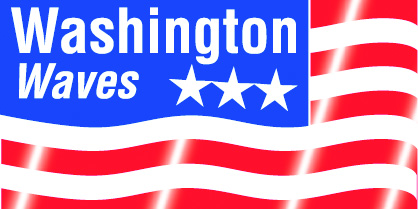Washington, D.C.–A key House panel officially kicked off an effort to pass a water resources development bill in 2020, with leading members from both parties committing once again to sticking with their biennial schedule for such legislation.
“Staying on the two-year schedule for enacting the next new WRDA is critical,” said Rep. Grace Napolitano (D-Calif.), chairwoman of the House Transportation and Infrastructure Subcommittee on Water Resource and Environment, as she convened a hearing on past and future WRDA bills.
Rep. Peter DeFazio (D-Ore.), chairman of the full committee, echoed her comments, vowing also to continue working to free up funds flowing into the Harbor Maintenance Trust Fund for their intended and lawful purpose.
Noting that his bill already passed out of his committee, DeFazio said he is pushing his leadership to take it to the House floor.
Two leading Republicans, Rep. Sam Graves of Missouri, the full committee’s ranking member, and Rep. Bruce Westerman of Arkansas, the subcommittee’s ranking member, said a 2020 WRDA bill must address the unprecedented flooding that is still hitting their states hard.
Noting the extensive flooding on the Upper Mississippi and Missouri river basins, Graves expressed concern the U.S. Army Corps of Engineers is being asked to balance too many priorities.
“When life, property and safety are at stake, flood control must always be priority number one,” he said.
R.D. James, assistant secretary of the Army for Civil Works, and Major Gen. Scott Spellmon, the Corps’ deputy commanding general for Civil and Emergency Operations, told the subcommittee the flood waters remain too high for the agency to do the necessary assessment and come up with a total estimate on flood damage to levees and other infrastructure.
“It is still raining,” Spellmon said after he put the cost of the known damage at $1.9 billion.
James predicted Congress will be asked to pass another supplemental appropriations measure.
Rob Innis of LafargeHolcim in Baltimore, chairman of the Inland Waterways Users Board and a member of the Waterways Council Inc. board, also testified, endorsing the panel’s biennial schedule for WRDA and thanking it for a cost-share change from 50 percent non-federal sponsor and 50 percent federal government to a 25-75 percent split that accelerated project delivery on the inland waterways system.
Innis urged lawmakers to consider addressing that cost-share in WRDA 2020.
Budget Agreement
Senate Majority Leader Mitch McConnell (R-Ky.) warned that time is running out on negotiations to reach a budget agreement and avoid a chaotic end for the current fiscal year on September 30.
“It is time that we got serious on a bipartisan basis to try to work this out and not have the kind of chaos that goes along with our inability to come together on these kinds of important issues,” McConnell said.
According to the current congressional calendars, both chambers are expected to be away for most of August, returning after Labor Day.
A budget agreement not only would keep the fiscal year 2020 appropriations cycle on track and avoid a government shutdown on October 1, it also would keep significant spending cuts to kick in before the end of the year.
Without a deal, McConnell said members of Congress and the Trump administration would have to decide whether they wanted a short-term or long-term continuing resolution to keep the government open and a long-term or short-term increase of the debt ceiling.
He expressed confidence Congress would not allow the government to default.
In something of a pre-emptive strike, Sen. David Perdue (R-Ga.), along with Sen. Jim Inhofe (R-Okla.), led an effort to encourage the Trump administration to reach a consensus with congressional leaders on a two-year budget agreement.
In a letter signed by 16 Republican senators, they cautioned the administration that a continuing resolution would devastate the military.
Inhofe is chairman of the Senate Armed Services Committee.
Environmental Record
President Trump, who had made deregulation a major hallmark of his administration, delivered a speech at the White House to promote his administration’s record on the environment.
“When I ran for President, I pledged a strong, growing economy and a healthy environment because I believe that we can pursue both at the same time,” Trump said.
Both Environment Protection Agency Administrator Andrew Wheeler and Mary Neumayr, chairman of the Council on Environmental Quality, included efforts against marine litter in their remarks at the same event.
Wheeler, whose agency has been a leader in the president’s deregulatory effort, also included that goal in his remarks.
During an earlier briefing with reporters, Neumayr explained that Trump meets with his advisers regularly when asked why the president chose to speak about his record on the environment at this time.
“President Trump wanted to highlight some of the environmental actions his administration is taking to advance environmental protection as our economy has continued to grow,” she said.
Critics quickly pounced, rejecting Trump’s remarks.
Sen. Tom Carper (D-Del.), ranking member of the Senate Environment and Public Works Committee, described the president’s “Hail Mary” speech as a failed effort to change public opinion on his “disastrous environmental record.”
Document Delays
Citing delays in processing Certificate of Documentation (COD) applications and other requests, the U.S. Coast Guard’s National Vessel Documentation Center (NVDC) is asking customers to email questions to nvdc.w.webmaster@uscg.mil.
“Responses can be expected within 24-48 hours,” the NVDC stated on its website.
“We apologize for any inconvenience this may cause.”
Blaming the delay on the Information Technology system, the statement explained the Coast Guard has formed an internal team to facilitate NVDC’s ability to improve its response time in serving requests from the maritime industry.
Videos Promoted
The Waterways Council, Inc., is promoting five videos it produced to educate audiences about the inland waterways’ connection to agriculture, the labor community, freight shippers, building communities and the U.S. Corps of Engineers. The videos can be found at the following links:
Agriculture, https://www.youtube.com/watch?v=ubVj-zw7F8c;
Labor, https://youtu.be/tahMSmdiBW4
Shippers, https://youtu.be/eOrMlgd1hqI;
Building communities, https://youtu.be/7K3PixnDuWI;
Corps, https://youtu.be/XyaGZbi0OQA




